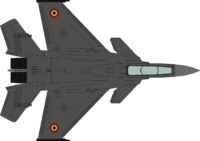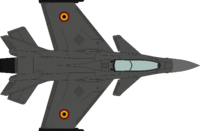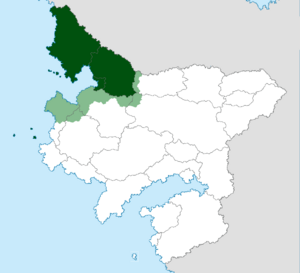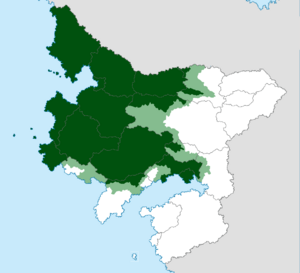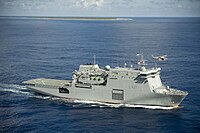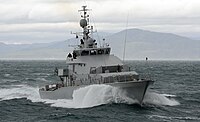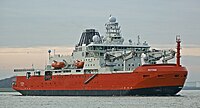User:Greater Carloso/Sandbox 4: Difference between revisions
m (→TBD) |
m (→TBD) |
||
| Line 879: | Line 879: | ||
==Operators== | ==Operators== | ||
{{flag|Carloso}} | {{unbulleted list| | ||
* | {{Tree list}} | ||
*Carlosian Marine Forces | * '''{{flag|Carloso}}''' | ||
** Carlosian Armed Forces | |||
{{flag|Agostinia}} | *** Carlosian Army | ||
*Agostinian Army | *** Carlosian Marine Corps | ||
{{Tree list/end}} | |||
{{flag|Côte d'Émeraude}} | {{Tree list}} | ||
*Émeraudean Army | * '''{{flag|Acrary}}''' | ||
** Acrary Armed Forces | |||
{{ | *** Acrary Army | ||
* | {{Tree list/end}} | ||
{{Tree list}} | |||
{{flag|Victory}} | * '''{{flag|Agostinia}}''' | ||
*Victorian Army | ** Agostinian Armed Forces | ||
*** Agostinian Army | |||
{{Tree list/end}} | |||
{{Tree list}} | |||
* '''{{flag|Côte d'Émeraude}}''' | |||
** Émeraudean Armed Forces | |||
*** Émeraudean Army | |||
{{Tree list/end}} | |||
{{Tree list}} | |||
* '''{{flag|Victory}}''' | |||
** Victorian Defence Forces | |||
*** Victorian Army | |||
{{Tree list/end}} | |||
}} | |||
Latest revision as of 13:39, 12 October 2024
Fighter aircraft
| Fighter aircraft | ||||||
|---|---|---|---|---|---|---|
| Name | Origin | Type | Version | Number | Notes | Photo |
| F24 Auriga | Interceptor aircraft | F47 | 90 | The F47 Arcoíris is a long-range interceptor aircraft developed and produced by TBD. It is an extremely large aircraft due its configuration, with expanded fuel tanks for increased range, powerful engines which allow it travel in excess of Mach 2.5 and internal weapons bays for an array of anti-air missiles. Rather than engaging with other fighter aircraft, it is envisioned to be used against incoming enemy strategic bombers, reconnaissance planes and AEW&C aircraft, utilising missiles akin to the PL-15 and AIM-260 JATM. | ||
| F28 Ventisca | Air-superiority fighter | F?? | ||||
| F17 Mediator | Air superiority fighter Multirole fighter |
F?? | ||||
| F19 Santana | Multirole fighter | F?? | ||||
TBD
| F49 Arista | |
|---|---|
| Role | Interceptor aircraft |
| National origin | |
| Manufacturer | Verdástrun |
| First flight | 6 August 1993 |
| Introduction | 21 June 1999 |
| Status | In service |
| Primary user | Carlosian Air Force |
| Produced | 1992–present |
| Number built | 90 |
The Verdástrun F49 Arista (Carlosian: edge) is a Carlosian twin-engine fourth-generation interceptor fighter aircraft designed and manufactured by Verdástrun for the Carlosian Air Force. Development commenced immediately after the end of the Bourgougian Blitz, which highlighted the difficulty of defending the vast airspace over the Musogorocian Ocean. The requirement was established for a large, extremely fast long-range fighter which could intercept enemy aircraft violating Carlosian airspace or which posed a strategic threat. After its first flight on 6 August 1993, the F49 Arista finally entered service with the Air Force on 21 June 1999. Though initially intended to be an interceptor, subsequent upgrades allow it to undertake air-to-surface, reconnaissance and electronic warfare missions if required. Almost all of the aircraft's components are built and assembled by Verdástrun, while Mestre provide the engines. Besides its high speed, the F49 Arista was one of the first Carlosian military aircraft to make stealth a major design consideration. It's capabilities have been significantly enhanced since the introduction of the S922 Retina beyond-visual-range air-to-air missile (BVRAAM) in 2023, designed specifically to target and destroy airborne early warning and control (AEW&C) systems, reconnaissance aircraft and strategic bombers out to a range of approximately 249 miles (400 km).
Operators
 Carloso
Carloso
- Carlosian Air Force
- 17th Fighter Squadron, Mediator
- 55th Fighter Squadron, Sanander Islands
- 63rd Fighter Squadron, Sanander Islands
- 78th Fighter Squadron, Madrigal
- 91st Fighter Squadron, Sirune
- Carlosian Air Force
Specifications
See also
- List of active Carlosian military aircraft
- Mikoyan-Gurevich MiG-25
- Mikoyan MiG-31
- Tupolev Tu-28
- Mikoyan PAK DP
- Panavia Tornado ADV
The Eritas
| Eritas Palace | |
|---|---|
| Alternative names | The Eritas |
| General information | |
| Architectural style | Neo-classical |
| Location | Madrigal, Carloso |
| Construction started | 1927 |
| Completed | 1949 |
| Owner | Department of Defence |
The Eritas Palace, often referred to simply as The Eritas is a large building in Madrigal, Carloso serving as the headquarters of the Carlosian Department of Defence. Initially intended as a palatial residence in the last years of the Carlosian Empire, construction was suspended following the abdication of Emperor Sébastien III. It was ultimately finished during the latter part of the Emergency War to serve as the headquarters of the massively expanded Department of Defence, undergoing an extension redesign and expansion of the original plans. Everyday some 25,000 civilian and military staff employees here. It is the largest office building in Carloso.
Between 2014 and 2020, the building underwent a major renovation, including the expansion of the extensive system of bunkers initially built during the Emergency War and the installation of blast-proof windows.
It is located in Madrigal's administrative district, which includes many notable buildings including Monrentera Palace; which houses the National Assembly, the Imperial Palace; formerly the residence of the Emperor of Carloso, the Assembly Libraries, Department of Finance, Madrigal Archives, the colossal bastion fort at La Fortalesa, Iglesia de San Perfecto, the Supreme Court, and Monasterio del Ulíces. It is well serviced by Madrigal's public transport system, including the city's tram system and is accessible from Tribunal metro station.
TBD
Directorate of Carloso | |||||||||||
|---|---|---|---|---|---|---|---|---|---|---|---|
| 1581–1826 | |||||||||||
|
Flag | |||||||||||
| Capital and largest city | Madrigal (1581–1709, 1826) Toro (1709–1712) Vosa (1712–1826) Amarda (1823–1826) | ||||||||||
| Official languages | Carlosian | ||||||||||
| Religion | Catholicism (official) Judaism (minority) | ||||||||||
| Demonym(s) | Carlosian | ||||||||||
| Government | Unitary stratocratic directorial republic | ||||||||||
| Directorate | |||||||||||
| President | |||||||||||
• 1823–1826 | Cárlos Mostodra | ||||||||||
| Currency | Carlosian dero (D£) | ||||||||||
| |||||||||||
| Today part of | |||||||||||
The Directorate of Carloso was a state which existed in Western Musgorocia from the foundation of Carloso following the conclusion in 1581 of its independence struggle against Spain, until its dissolution in 1826 when it was reformed into the Carlosian Empire. After the British conquest of Carloso was halted at the Battle of Toro in 1709, the Directorate continued to exist as a rump state, only exerting control full over approximately 12.9% of Carloso's original territory, though encompassing about 20.4% of its then population. During this period, its area comprised the modern-day provinces of Zararcia. Toro, Colusia and the Cadena Islands, while some areas in neighbouring Lagosa, Cartalusia, Sirune, Mercurea and Sargos provinces remained contested between Carlosian and British forces, changing hands several times. Initially Toro served as the provisional capital, before being moved to the heavily fortified city of Vosa in the Cadena Islands.
Following the commencement of Cárlos Mostodra's campaign of liberation in 1824, the Directorate recovered large swathes of its former territory, including the original capital of Madrigal on 18 July 1826, though would become officially extinct a few days later when Mostodra proclaimed himself Emperor and reformed Carloso into the Carlosian Empire.
Throughout the Directorate, Carloso was considered a unitary stratocratic directorial republic, governed by a committee of seven military officers elected by serving members in the Armed Forces, but headed by a President who was elected amongst the members of the Directory to a two year term.
Cispanian Civil War
| Cispanian Civil War | |||||
|---|---|---|---|---|---|
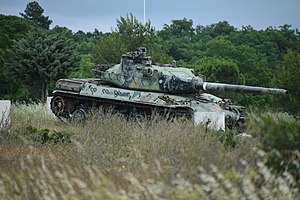 | |||||
| |||||
| Belligerents | |||||
|
|
Armée du Nord Les Couguars Mouvement 19 Patriotes Nationaux | ||||
The Cispanian Civil War is an ongoing civil war
Carlosian Marine Corps
| Carlosian Marine Forces | |
|---|---|
| Country | |
The Carlosian Marine Forces (CMF), often simply referred to as the Carlosian Marines are the naval infantry branch of the Carlosian Armed Forces.
Due to the largely terrestrial nature of warfare in Musgorocia during the Carlosian Empire, it was not until the Emergency War (1946–1951) that the Marine Forces distinguished themselves as a branch, conducting a massive campaign of amphibious warfare and island hopping in the Oceanic Campaign, including the Battle of the Sandander Islands, the Battle of Vaotua, the Battle of the Îles Perlegrise, Battle of the Îles Redoutables, the Battle of the Îles Leclerc and the Arceneaux Landings. By the end of the war, the size of the branch had swelled to over 430,000 active service members. The branch again distinguished itself in the Bourgougian Blitz (1987) when it spearheaded the Liberation of Victory.
Sanlúcar-class corvette
 | |
| Class overview | |
|---|---|
| Name: | Sanlúcar-class |
| Operators: |
|
| Cost: | |
| Planned: | 48 |
| Building: | 12 |
| Active: | 36 |
| General characteristics | |
| Type: | Guided-missile corvette |
| Displacement: | 2,810 tonnes |
| Length: | 105.8 m |
| Beam: | 14.9 m |
| Propulsion: | 2 × diesel engines |
| Speed: | 30 knots |
| Range: | 8,500 km |
| Sensors and processing systems: | AESA radar |
| Armament: |
|
| Armor: | Kevlar lining |
| Aircraft carried: | 1 × medium helicopter |
| Aviation facilities: | Helicopter deck and hangar |
The Sanlúcar-class are a class of heavy, guided-missile corvettes built by TBD for the Carlosian Navy. Named after the circuit of Mostodra, they are primarily geared towards green-water naval operations, particularly convoy escort and anti-piracy. With a length of 105.8 metres and a displacement of 2,810 tonnes, it is regarded as the smallest class of warship in service with the Carlosian Navy. While conceived as a multi-mission class of ships, they are primarily designed for air defence. Its armament consists of a single 16-cell vertical launch system (VLS), capable of carrying surface-to-air, surface-to-surface, anti-ship and anti-submarine missiles. Additionally, it is armed with a 76 mm naval gun, a pair of triple torpedo launchers, two manned 30 mm autocannons for point-defence a close-in weapon system (CIWS). An enclosed hangar and helipad towards the stern of the ship has room for a single medium helicopter.
Construction began in early 2015, and the first ships were being commissioned by late 2017. By 2024, 36 ships were in service with the Carlosian Navy. The construction of another 12 were authorised in 2024 following an increase in tensions in the Musgorocian Ocean.
See also
- Admiral Aida Kensuke-class
Thouthen
Democratic Republic of Free Thouthen | |
|---|---|
|
Flag | |
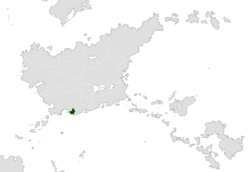 Location of Thouthen (dark green) in Musgorocia (grey) – [Legend] | |
| Capital | Toleranzestaadt |
| Largest largest city | Benkenstein |
| Official languages | Dutch |
| Demonym(s) | Thouthenese |
| Government | Unitary one-party equalist state under a totalitarian dictatorship |
• Great Equaliser | Daniel Khassai Siyoum |
| Population | |
• 2022 census | 11,200,234 |
| Date format | dd/mm/yyyy (CE) |
| Driving side | right |
Thouthen, officially the Democratic Republic of Free Thouthen, is a sovereign state located in Musgorocia. Governed as a unitary one-party state under a 'liberal progressive equalist' ideology.
With the sole exception of Bourgougia, no other Musgorocian state recognises the rule of the TDSP, and as such have regarded declarations by Siyoum claiming to have withdrawn from regional institutions such as the Musgorocian Criminal Court (MCC) as invalid.
Carlosian Coastguard
| Carlosian Coastguard |
|---|
The Carlosian Coastguard is a maritime security, law enforcement and search and rescue agency of Carloso. Organised as a maritime gendarmerie under the Department of Justice, it was founded on 16 November 2011, absorbing many of the responsibilities held by the Carlosian Navy in patrolling the country's vast territorial waters and exclusive economic zone (EEZ), along with many other duties. The Coastguard has been described as a paramilitary organisation and an unofficial branch of the Carlosian Armed Forces, despite its civilian nature and not being subject to the jurisdiction of military courts. This characterisation has been due to the military-style training of its personnel, large fleet of aircraft and the considerable armament of its patrol vessels, particularly its larger ships. It operates in conjunction with the Carlosian Navy, as well as the maritime branch of the National Police, and the equivalent branches of Carloso's various provincial police services. Carlosian law provides that the Coastguard may be militarised by executive order if needs be, in which case it would officially become a branch of the Carlosian Armed Forces.
| Amphibious warfare ships | ||||||
|---|---|---|---|---|---|---|
| Name | Picture | Origin | Type | Ships | Number | Notes |
| Offshore patrol vessel | 1 | Flagship based on a highly modified Serca-class destroyer that has been stripped of most of its armaments. | ||||
| 2 | ||||||
| Offshore patrol vessel | 10 | |||||
| Offshore patrol vessel | 22 | |||||
| Offshore patrol vessel | 36 | |||||
| Offshore patrol vessel | 28 | |||||
| Icebreaker | 2 | |||||
Thouthenese government-in-exile
Republic of Thouthen | |
|---|---|
| Status | Government-in-exile |
| Capital | Benkenstein (de jure) Montsouris (de facto) |
| Government | Unitary parliamentary constitutional republic with an executive presidency |
• President | Ineke Werkmann |
| Legislature | House of Representatives |
| Currency | Thouthenese guilder (Tƒ) |
The Thouthenese government-in-exile, officially the Government of the Republic of Thouthen, was formed during the Thouthen crisis. It opposes the government of the Democratic Republic of Free Thouthen, which de facto rules over the country, though with limited international recognition. It is led by Ineke Werkmann, former People's Commissar for Finance of Free Thouthen, who resigned and left the country following the initiation of large-scale mass killings against the country's Caucasian, Christian population. It describes itself as the legal successor to the former Republic of Thouthen, which de facto became extinct following the Equalist Revolution. While it claims the Thouthenese capital of Benkenstein (also known as Toleranzestaadt) as its administrative centre, it is currently based in Montsouris, hosted by the government of Côte d'Émeraude. It has not received international recognition, though it is expected members of the Musgorocian Community (MC) will recognise it as the official government of Thouthen in the near future.
Nuevo Valdés
Viceroyalty of Nuevo Valdés | |
|---|---|
| 1505–1581 | |
|
Flag | |
| Capital | Madrigal |
| Government | Monarchy |
| King | |
| Historical era | Colonial era |
• Established | 3 August 1505 |
• Disestablished | 11 February 1581 |
| Currency | Tauridian real |
Nuevo Valdés, officially the Viceroyalty of Nuevo Valdés, or alternatively New Valdés, was a colonial territory of the Tauridian Empire. At its greatest extent, it encompassed the territory of modern-day Carloso, Sarabagia, Orticuria, Gran Laurencia, Taliaferro and Acrary. While various temporary trading outposts and fortifications had been set up prior, it was not until the foundation of Secano on 3 August 1505 that Tauridia began to establish a permanent presence in Musgorocia. From Secano, Nuevo Valdés expanded north and westwards, while also founding settlements along the northern Musgorocian coast on the Laurencian Sea, including Galarsa and Jaure. Following a destructive raid on Secano by Luttenrieden crusaders on 4–10 November 1525, a new capital, Madrigal, was founded in 1527, protected by the geography of Madrigal Bay, quickly becoming an important port city. Amidst constant clashes with Luttenrieden forces and Aboriginal Musgorocian warriors, a class of soldier-farmers, known as vencedores, emerged, driving the expansion of Nuevo Valdés into the Musgorocian interior. By 1575, the territory encompassed 1,412,844 square kilometres (545,502 sq mi), with a rapidly growing population of approximately 700,000, including the Aboriginal Musgorocians living within its borders.
Following the Treaty of Arteida, signed not too far from where Nuevo Valdés had been founded, the territory was dissolved and succeeded by the Carlosian Directorate; named after the fallen rebel general, Sarbecuria (which would later split into Sarabagia and Orticuria), the Aeyarissan colony of Acrary, and the Tauridian territory of Nueva Algeciras, composed of modern-day Gran Laurencia and Taliaferro, the only territories Tauridia had retained control of. Nueva Algeciras would last until the 1830s, when it was liberated by revolutionary forces during the Musgorocian wars of independence, bringing a definitive end to Tauridia's colonial empire in Musgorocia.
TBD
This article is incomplete because it is pending further input from participants, or it is a work-in-progress by one author. Please comment on this article's talk page to share your input, comments and questions. Note: To contribute to this article, you may need to seek help from the author(s) of this page. |
| R356 Renegón | |
|---|---|
| Type | Main battle tank |
| Place of origin | |
| Service history | |
| In service | 1979–present |
| Used by | See operators |
| Wars | Bourgougian Blitz Acrary Civil War |
| Production history | |
| Designed | 1975–1978 |
| Unit cost | D£2.2 million (FY2024) $4.8 million |
| Produced | 1978–2002 |
| No. built | 15,500 |
| Variants | See variants |
| Specifications | |
| Weight | ~42 tonnes |
| Crew | 3 (commander, gunner, driver) |
| Armor | Composite armour on top of rolled homogenous steel |
Main armament | 122 mm smoothbore gun |
| Engine | Diesel engine |
| Suspension | Torsion bar |
Operational range | 450 km |
| Speed | 75 km/h (onroad) 55 km/h (offroad) |
The R356 Renegón (Carlosian: grumbling) is a second-generation main battle tank in service with the Carlosian Armed Forces. A relatively light design compared to many contemporary vehicles, it excels in its superior maneuverability and powerful engine. It first saw combat in the Bourgougian Blitz, where it was used extensively by Carlosian forces to great effect. Though largely relegated to a secondary role in the Carlosian Army, it remains the primary tank of the Carlosian Marine Forces, where it is favoured for its light weight, ease of maintenance, and transportability. It has been upgraded numerous times since its inception. Its chassis served as the basis for several other vehicles, including armoured recovery vehicles, self-propelled artillery, heavy armoured personnel carriers, and self-propelled anti-aircraft systems. It has been exported to Carloso's Musgorocian allies, including the militaries of Agostinia, Côte d'Émeraude, Agostinia and Victory.
Operators
 Carloso
Carloso
- Carlosian Armed Forces
- Carlosian Army
- Carlosian Marine Corps
- Carlosian Armed Forces
Acrary
- Acrary Armed Forces
- Acrary Army
- Acrary Armed Forces
Agostinia
- Agostinian Armed Forces
- Agostinian Army
- Agostinian Armed Forces
Côte d'Émeraude
- Émeraudean Armed Forces
- Émeraudean Army
- Émeraudean Armed Forces
 Victory
Victory
- Victorian Defence Forces
- Victorian Army
- Victorian Defence Forces
